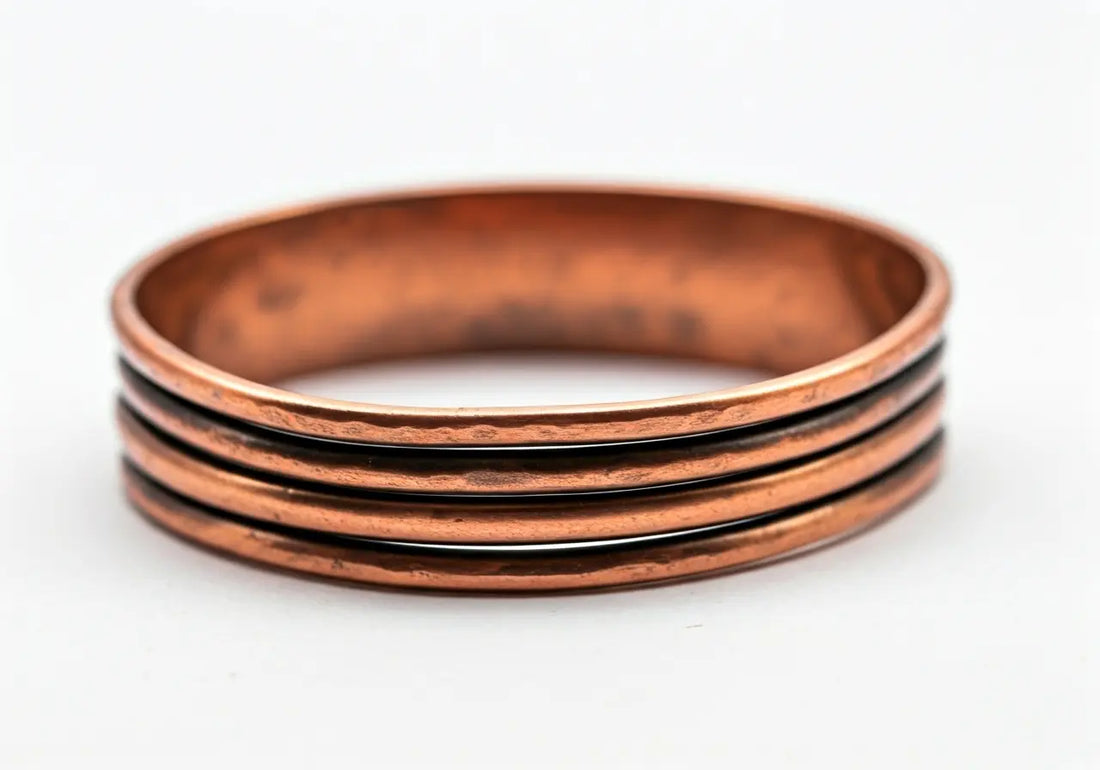Copper bracelets have been worn for centuries, believed to offer a range of health benefits. But how do they actually work? This FAQ blog will take you through the common claims and the science behind copper bracelets, so you can decide for yourself if they might be beneficial for you.
What Are Copper Bracelets?
Copper bracelets are simple accessories made of copper or copper alloys, known for their warm reddish-brown hue. They are often used in alternative medicine for their purported health benefits.
Interestingly, copper has been used in various cultures not just as an adornment, but as a symbol of vitality and energy. The appeal of copper bracelets extends beyond their beauty; they are also believed to connect with the body’s energy fields, potentially harmonizing and balancing life forces.
These bracelets are crafted in various designs. Some are simple and unadorned, while others feature intricate patterns or stones. The choice of styles means there’s likely one to suit anyone’s personal taste.
Believed Benefits of Copper Bracelets
Many wear copper bracelets to alleviate joint pain, improve circulation, and boost the immune system. These benefits are mostly anecdotal and have been passed down through generations.
The belief that copper can alleviate arthritis symptoms has been one of the most enduring. Although clinical evidence is not definitive, some users report reduced stiffness and discomfort over time.
Copper is crucial for forming red blood cells and maintaining nerve cells and the immune system. While wearing a bracelet may not significantly boost copper levels in the body, some proponents argue the skin’s absorption of copper can contribute to health.
The Science Behind Copper Bracelets
Scientific studies on copper bracelets show mixed results. While some studies suggest they might offer pain relief, others find no significant difference. Copper does play a role in health, being an essential trace mineral necessary for various bodily functions.
A 2013 study published in the journal ‘PLOS ONE’ indicated that copper bracelets did not exhibit any statistically significant therapeutic effects for arthritis. However, the placebo effect might be a contributing factor to users feeling better after wearing them.
Copper’s antimicrobial properties are scientifically documented. This could potentially be a reason why some believers suggest its use for skin health, as copper can actively reduce the level of bacteria on its surface.
How to Use Copper Bracelets
Wearing copper bracelets is simple. Ensure they fit snugly but comfortably around your wrist. Some people wear them 24⁄7, while others put them on only during the day. Remember to clean them regularly to maintain their shine and prevent skin irritation.
Apart from regular wear, some people believe that positioning the bracelet on your non-dominant hand can enhance the purported health effects. Whether or not this is scientifically proven is still up for debate.
It’s also advisable to remove the bracelet before bathing or swimming, as prolonged exposure to water can accelerate oxidation, which might affect its appearance and potentially cause greenish marks on the skin.
Potential Side Effects
Some wearers may experience skin discoloration or irritation. This is typically harmless and results from the metal oxidizing with sweat. If irritation persists, it might be wise to discontinue use.
If you notice a green stain on your wrist, it is usually due to copper’s reaction with the acids in sweat. This patina is not harmful and can be cleaned off with soap and water.
Copper allergies are rare, but symptoms can include itchiness, redness, or a rash. In such cases, removing the bracelet and consulting with a dermatologist is recommended.
Final Thoughts on Copper Bracelets
Whether you choose to wear copper bracelets for their potential health benefits or simply as a stylish accessory, it’s essential to understand the science and beliefs behind them. While many swear by their healing properties, scientific backing is limited. As always, consult with a healthcare professional before beginning any new health regimen.


